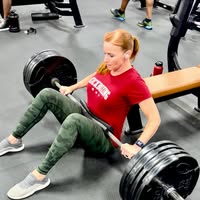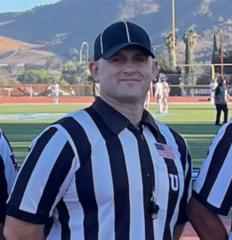Sep 7 • Ask Anthony Anything
Fatty15: The Little Fat That Could… Or Just Another Marketing Muffin Top?
One of the best parts of this journey is having mentors who push me to keep learning and questioning. has been that kind of mentor for me. She’s not only a brilliant mind in cellular medicine, she’s also someone who constantly reminds me to dig deeper, challenge assumptions, and ask better questions.
It was actually Dr. Yurth who got me to revisit the research around Fatty15. Her guidance along with the incredible work she’s doing through the Boulder Longevity Institute and her Human Optimization Academy has been a game-changer for me and so many others. Having people like her in my corner makes me a better student, a better teacher, and hopefully of better service to all of you.
With that in mind, I wanted to share some thoughts on Fatty15, the hype, the skepticism, and what we can really learn from it when we zoom out and ask deeper questions.
Fatty 15 has become one of the most talked-about molecules in the wellness and longevity space, not because it is new to science, but because of the way it has been packaged and sold. Marketed as the first “essential” odd-chain saturated fatty acid, Fatty 15 (the supplement form of C15:0) promises to stabilize membranes, reduce inflammation, and extend healthspan. For many, the narrative is seductive: here is a nutrient that has been hiding in plain sight, maligned by decades of anti-saturated-fat dogma, finally rebranded as a cornerstone of cellular resilience.
But step back from the marketing and look at the science, and the picture becomes more complex. Lipidologists and metabolic researchers, including Dr. Dayan Goodenowe, argue that high levels of pentadecanoic acid in the blood are not causal but correlative. In other words, elevated C15:0 is a marker of robust lipid metabolism, not the reason for it. To use an analogy, it’s like noticing that healthy cities all have clean street signs and then deciding that shipping in more street signs will fix a crumbling city. The signs are a marker of order; they are not the thing that creates it. Supplementing with C15:0 without repairing upstream dysfunction may not move the needle and in some cases, may even make things worse.
Cell membranes are constantly under assault from oxidants, metabolic stress, and mechanical strain. Polyunsaturated fatty acids make membranes flexible but fragile, vulnerable to oxidation and peroxidation. The theory is that C15:0, being an odd-chain saturated fatty acid, acts like a sturdier brick in the wall, making membranes less prone to collapse. In theory, stronger walls mean less ion leakage, less mitochondrial stress, and fewer ROS-driven NF-κB alarms. That’s the adaptive promise.
From there, the next domino is receptor signaling. Fatty 15 has been shown in vitro to activate PPARα and PPARδ, nuclear receptors that govern fatty acid oxidation, mitochondrial biogenesis, and inflammation. PPARα clears traffic jams of triglycerides, while PPARδ boosts endurance capacity and mitochondrial turnover. In animal models, C15:0 supplementation improved glucose handling, reduced liver fibrosis, and calmed inflammatory cytokines. In cell studies, it even outperformed EPA, the omega-3 considered a gold standard for anti-inflammatory effects. Epidemiological studies link higher circulating C15:0 with lower rates of type 2 diabetes, cardiovascular disease, fatty liver, and all-cause mortality. At first glance, this looks like a slam dunk: more C15:0, more resilience.
But here’s where the domino chain falters. Correlation is not causation. People with higher C15:0 also tend to have healthier lipid metabolism overall, better microbiome production of odd-chain fatty acids, and dietary patterns that support metabolic flexibility. The presence of C15:0 may simply be a downstream biomarker of upstream health. Supplementing it without fixing those upstream drivers is like trying to fix a power grid by bolting on sturdier streetlights while the generators still sputter. The symptom looks improved, but the system hasn’t been addressed.
This is the core critique from lipidologists: Stephanie Venn-Watson and her team, who market Fatty 15, have done most of the published supplementation studies. While their early human data suggest improvements in red blood cell stability, liver enzymes, and circulating C15:0 levels, independent large-scale randomized controlled trials are lacking. Researchers outside that orbit remain skeptical. To many, this looks less like a breakthrough nutrient and more like one of the most successful supplement marketing campaigns of the past decade. The fact that long-term users sometimes report worse Prodrome scans and deteriorating omega-3 profiles adds to the suspicion.
Why might this happen? One possibility is competition within the membrane. If a membrane already has a fragile, PUFA-heavy composition, adding C15:0 could destabilize the balance rather than strengthen it. Another possibility is off-target PPAR activation: in a metabolically compromised individual, pushing PPAR pathways without simultaneously restoring AMPK or sirtuin function could redirect lipids in unhelpful ways. And there’s the risk that supplementation leads to “marker hacking” — raising C15:0 levels in the blood while the underlying redox imbalance, insulin resistance, or mitochondrial dysfunction remains untouched. The result is a prettier lab value but a worsening functional state.
So where does Fatty 15 fit? Mechanistically, it has a plausible role as a membrane stabilizer and nuclear receptor modulator. It may be useful in individuals with demonstrably low C15:0, poor dairy intake, or specific genetic/metabolic quirks. It could help restore resilience in red blood cells or support fatty acid oxidation when stacked with other upstream interventions. But as a standalone tool, without correcting core issues like mitochondrial redox, NAD+ depletion, chronic NF-κB activation, or omega-6 overload, it is unlikely to deliver lasting benefit.
The use cases, then, are narrow. Someone with low RBC C15:0 and metabolic fragility might try 100–200 mg daily, stacked with omega-3s for complementary flexibility, NAD+ precursors to restore sirtuins, and AMPK activators like fasting, exercise, or berberine to clear upstream blockages. Biomarkers worth tracking would include triglycerides, HDL, hsCRP, liver enzymes, and ideally red blood cell membrane fatty acid composition. If those improve alongside function, there may be value. If Prodrome scans or omega ratios worsen, then supplementation is not helping and may be hurting.
This heterogeneity of response is predictable. Genetics, age, sex hormones, microbiome composition, and baseline lipid metabolism all shape how C15:0 is produced, integrated, and metabolized. People with robust metabolic health may get little benefit. People with dysbiosis or poor peroxisomal function may see odd responses. The elderly, with fragile membranes and reduced sirtuin activity, might benefit most but only if paired with upstream support.
Comparisons help here. Omega-3s are flexible bamboo scaffolding; they keep membranes dynamic and generate resolvins to actively end inflammation. C15:0 is more like a hardwood plank, rigid and stabilizing. Both are useful, but neither works in isolation. Peptides like SS-31 stabilize cardiolipin at the mitochondrial inner membrane, directly improving electron flow and reducing ROS. Fatty 15 stabilizes at the outer level, reinforcing the wall. Together they might synergize, but Fatty 15 alone won’t fix a failing power grid.
In the end, the most honest conclusion is this: Fatty 15 is not a scam, but it is not a miracle nutrient either. It’s a potentially useful downstream stabilizer being marketed upstream. It tells us something important that odd-chain fatty acids are markers of health and perhaps part of the nutritional landscape we’ve overlooked but it is not the key domino to push back disease. The real dominoes remain upstream: mitochondrial redox, AMPK activity, NAD+ status, NF-κB balance, iron-driven ferroptosis, and microbiome health. Fix those, and C15:0 may rise naturally. Supplement it without fixing those, and you may just be painting the walls while the foundation cracks.
17
22 comments

skool.com/castore-built-to-adapt-7414
Where science meets results. Learn peptides, training, recovery & more. No ego, no fluff—just smarter bodies, better minds, built to adapt.
Powered by





